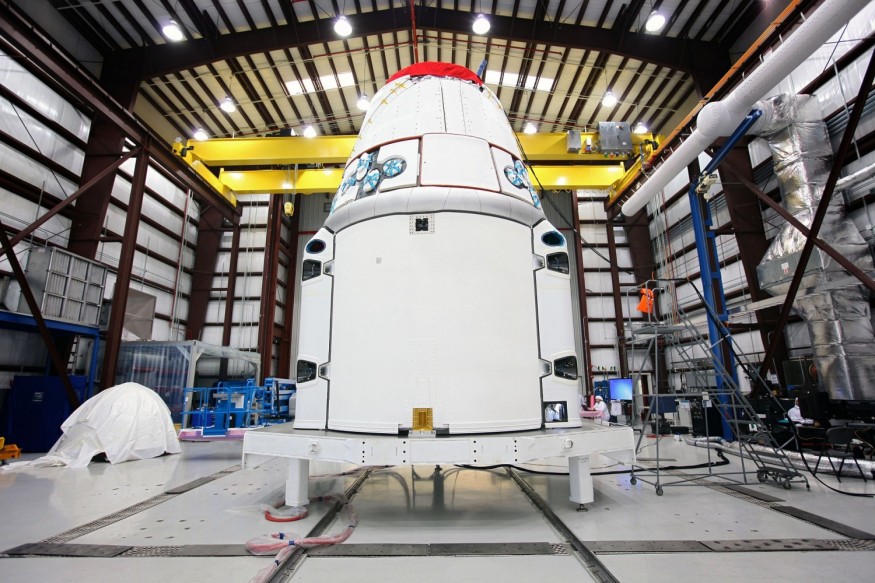NASA SpaceFlight managing editor Chris Bergin shows off SpaceX's Can Crusher testing apparatus on his social media account. The apparatus is intended to test rockets by squeezing them with massive force.
SpaceX Can Crusher Update
The Can Crusher is seen rolling down the Boca Chica, TX base in a video posted on Twitter. It was on its way to test Starship B7.1 components, which SpaceX is currently assembling.
It's not a massive Tarantula; it's the "Can Crusher" - that was recently used to induce loads on Test Tank B7.1.
— Chris Bergin - NSF (@NASASpaceflight) September 9, 2022
Currently rolling down Highway 4.
https://t.co/bVY2FWKyt5 pic.twitter.com/CNN4h2jbCO
Bergin's video is the most recent upload of the crusher. As the name implies, it is a massive compactor that essentially does the same thing that aluminum can compactors do to empty soda cans.
In a 2011 post, NASA wrote, "Place a soda can on the floor upright and then stand on it." The post continued to gradually apply weight until the can ripples and collapses.
According to the post, this action is similar to what a team of NASA engineers will do to a massive computer.
SpaceX Attempts to Crush Starship Test Tank
The Can Crusher video indicates that the company is preparing to test another batch of tanks in the hope of qualifying Super Heavy booster design changes and paving the way for a significant upgrade to all Starship tank domes.
According to Teslarati, the first new test tank, unofficially dubbed the EDOME tank due to a cryptic label on one of its halves, serves a much more straightforward purpose. While the tank's steel rings appear to be the same as those on current Starship and Super Heavy prototypes, the tank's two domes have almost nothing in common with the dozens of domes SpaceX has built and tested over the last three years of development.
The new domes are much simpler and should be easier to produce than the domes SpaceX is used to. They should be more efficient because of their spherical shape, allowing future Starship tanks to store a bit more propellant while taking up the same amount of vertical space.

Since its June 8 rollout, SpaceX has yet to begin testing the EDOME tank and does not appear to be any closer to doing so 12 days later.
SpaceX delivered a second test tank to the launch site on June 16, where it joined the EDOME tank at a staging area that was previously a Starship landing pad.
The EDOME tank is more of a general-purpose test article, whereas the B7.1 tank is designed specifically to test Super Heavy booster design changes.
Bergin tweeted about the Super Heavy 7.1 as it joins the EDOME test tank.
It's a Test Tank Party! Super Heavy 7.1 joins the EDOME Test Tank. Fascinating that they are working on future design improvements in parallel with preps on current Boosters and Ships.
— Chris Bergin - NSF (@NASASpaceflight) June 17, 2022
Also, a shoutout to the SPMT drivers. Great skills.https://t.co/2S9RYdDoV9 pic.twitter.com/6jh3CI69vz
B7.1 Test Tank
B7.1 resembles a miniature Super Heavy. Its three-ring top section is reinforced with dozens of external stringers, similar to a booster.
It strangely lacks grid fin cutouts, and the tank's forward dome lacks the reaction frame to which those hypothetical grid fins would be attached. The same stringers can be found on the tank's bottom half, and a new design squeezes four slightly shorter rings into the same height as three.
The Super Heavy thrust dome enclosed by those rings is also new. It brings the total number of central Raptor engines to 13 from 9. SpaceX wants to test those major design changes.
Technically, SpaceX conducted a similar test with a test tank known as BN2.1 in mid-2021, but that tank featured a thrust dome with space for nine older Raptors capable of producing around 1700 tons of thrust.
B7.1 testing will go beyond BN2.1, with a structural test stand allowing SpaceX to simulate the compressive forces that Super Heavy boosters may encounter in flight. It would add another dimension of stress on top of the 13 hydraulic rams that will subject the test tank to the equivalent of 3000 tons (6.6M lbs) of thrust.
RELATED ARTICLE : SpaceX to Reuse Dragon Spacecraft Fleet After Rocket Booster from NASA Crew-1 'Leaned'
Check out more news and information on Space in Science Times. (BOLD) Space












